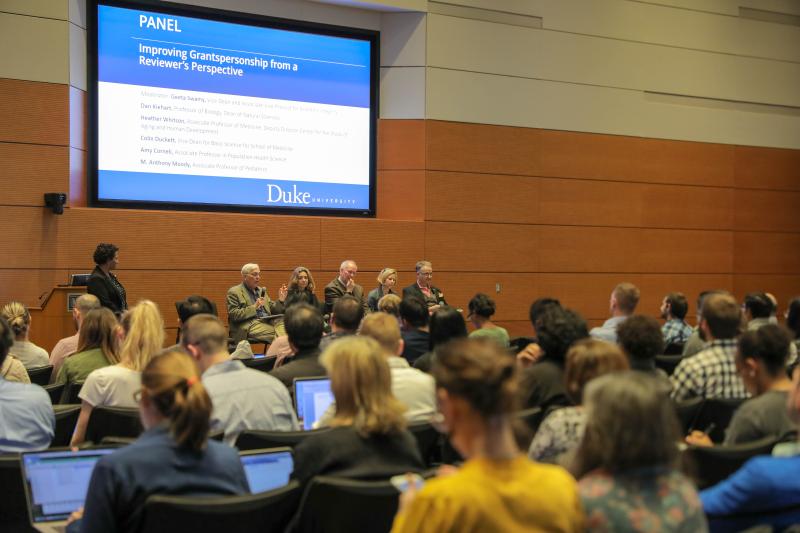
The newly created Duke Office of Scientific Integrity (of which ASIST is part of) recently hosted a town hall “Improving Grantspersonship from a Reviewer's Perspective”. Over 200 Duke faculty, trainees and staff came to hear tips and tricks on grant writing from faculty who are experienced grant reviewers. Our panelists came from a variety of disciplines from across Duke:
- Geeta Swamy, Vice Dean and Associate Vice Provost for Scientific Integrity
- Dan Kiehart, Professor of Biology, Dean of Natural Sciences
- Heather Whitson, Associate Professor of Medicine, Deputy Director Center for the Study of Aging and Human Development
- Colin Duckett, Vice Dean for Basic Science for School of Medicine
- Amy Corneli, Associate Professor in Population Health Science
- M. Anthony Moody, Associate Professor of Pediatrics
In a lively session, a few themes emerged:
- Follow the directions. Ensure you have read the funding solicitation carefully and follow directions. As you work on your grant, continue to re-read the directions to make sure you have directly addressed all of the guidelines and review criteria.
- Use the space allotted efficiently/effectively. The panelists reiterated the importance of ALL grants sections and using those to support you and your team’s ability to conduct the work proposed in a rigorous manner. Utilizing boilerplate language may be appropriate for some of the ancillary grants sections, but be sure to tailor them to fit your application. Even unscored sections of a grant (i.e., budget) are important to be well thought out and realistic.
- Make it the easiest grant for them to review. Reviewers are reviewing a multitude of grants at a time, so take care to make the grant the “easiest” thing for them to review. Use direct language to provide them a “roadmap”. For example, “the premise of the grant is….” directly tells a reviewer this is the premise. You can also restate key information (i.e., the aim) in the document so the reviewer does not have to scroll up to reread your aim. Use tables and figures judiciously to present information supporting your grant, but make sure tables and figures are readable and add new information beyond the grant text. Avoid too many acronyms and use formatting to highlight key information and break up the text into subject areas (with an emphasis on key).
- Consider your audience. Your reviewer will not necessarily be an expert in your specific area so make sure that your language is written such that any scientist can understand it. Conversely, you must also be mindful that the reviewers scoring your proposal may be the authors of the papers you are citing. Solicit colleagues to review your documents to help point out logical gaps, errors/typos, and sections that are unclear.
- Let your passion show. Make sure you let your passion for your research topic shine through. That will help engage your reviewer into your vision and may influence the way they present your grant to other reviewers.
A common thread in these themes is that grant writing takes time to do it well. It takes planning to ensure you have sufficient time to have others or yourself review/edit your documents, collect effective letters of support (providing a good draft helps) and biosketches (make sure these are grant-specific), and have time to double-check figures/tables to ensure they are readable, are correctly numbered within the text and contribute to your overall grant. We hope these tips help you as you plan and write your next grant. There are many great resources available to Duke researchers to support grant writing. To learn more about resources you can utilize, please contact myresearchnavigators@duke.edu.
We look forward to seeing you a future research town hall sessions! As always, we are here to ASIST.

Photos by Caroline Cockrell